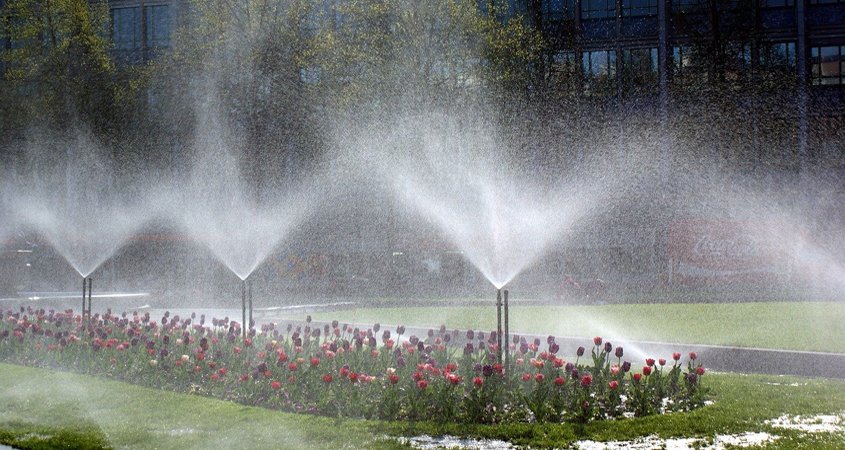To support and protect your investment in waterwise landscaping, you need to have a strong irrigation IQ and understand the basics. You’ll be able to best maintain and maximize your system’s efficiency, which is vitally important during times of drought in the San Diego region.
Conventional irrigation systems can be inefficient

Letting sprinklers run to excess is an example of a poorly performing irrigation system due to bad design, inadequate maintenance, and improper management and it’s unacceptable. Photo: Wolfgang Bantz
Well-designed and operated systems can reliably deliver the necessary water to sustain your landscaping without waste or excess. Poorly performing systems can suffer due to bad design, inadequate maintenance, and improper management.
A shutoff valve (ball valve) can be manually operated to cut off the water supply in the event of a leak, a malfunction, or a major repair.
The anti-siphon valve, when activated by an irrigation controller, delivers water through a PVC pipe lateral irrigation line, ultimately reaching the sprinkler head, which applies the water to your landscaping.
Intelligent irrigation systems operate efficiently
Efficient irrigation components are designed to operate at lower pressure levels, as specified by each product manufacturer. Devices are more likely to fail under excess pressure, and damage can occur.
A pressure regulator will eliminate excess pressure.
A submeter can be installed where the irrigation system tees off the mainline to the house. It is a recommended option for large properties to keep track of the actual volume of water being applied to the landscape. Single-family homes typically have a single mixed-use meter which doesn’t distinguish between indoor and outdoor water use. An alternative is to install a flow sensor working in tandem with a smart controller.
Low-volume irrigation devices like rotary nozzles and micro or drip irrigation are designed to deliver water to the landscape at a slower rate. This better approximates the infiltration rate of the soil and reduces runoff.
Smart controllers will automatically adjust irrigation schedules in response to changing weather conditions. They come in two varieties. ET controllers monitor weather conditions. Soil moisture-based controllers directly sample the moisture in the ground. These devices also have features like “cycle and soak functions that can help eliminate runoff. When selecting a controller, look for brands with the EPA WaterSense ® label.
This article is part of a year-long series inspired by the 71-page Sustainable Landscapes Program guidebook. The Water Authority and its partners also offer other great resources for landscaping upgrades, including free WaterSmart classes at WaterSmartSD.org.




